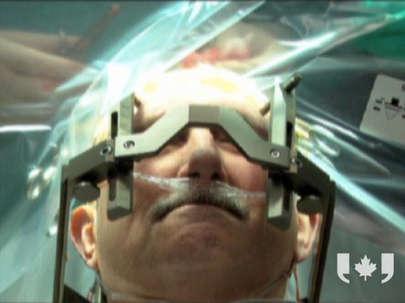This week’s five stories look at:
- Shocking Alzheimer’s Brains Helps Patients in Clinical Trial;
- New Breast Cancer Screening Technology Wins Sanofi-Pasteur Prize;
- Transformers – They’re Real and They’re Tiny;
- Taikonauts Plan to Grow Vegetables on the Moon in Closed Ecosystems;
- Electrochromic Windows Coming to Homes and Buildings in the Near Future.
First Brain Pacemaker Implanted in Alzheimer’s Patients
John Hopkins University is the site of an experiment involving the surgical implantation in patient’s brains of a pacemaker-like device. The implant provides deep brain stimulation. Implants like this have previously been used in cases of Parkinson’s Disease. Based on a preliminary study in 2010 which involved implanting devices in six Alzheimer’s patients at Toronto Western Hospital in Canada, this American trial will involve 40 patients over the next year. The Canadian trial yielded positive results showing increases in glucose metabolism and neuronal activity over a 13-month period. Compare that to decreases found in untreated or drug-treated Alzheimer’s patients. The first implant at John Hopkins was just performed with another scheduled for this month.
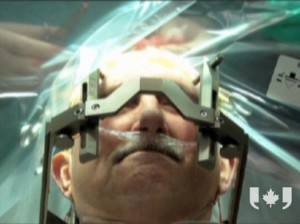
SenoSENSE – a New Technology for Breast Cancer Screening Wins Sanofi Pasteur Venture Challenge 2012
Breast cancer is a leading cause of death for women between the ages of 30 and 50. Mammographic screening is the standard tool. Mammography doesn’t necessarily measure whether a woman is at higher risk for breast cancer while at the same time it yields lots of false positives leading to unnecessary biopsies and medical procedure costs. Enter SenoSENSE and the Electrical Breast Densitometer (TM), a non-invasive screening tool that identifies women at elevated risk for developing breast cancer by accurately measuring breast tissue density. Women with dense breasts have a 4 to 6-times greater chance of developing breast cancer. And while a mammogram will show the density of a breast, it is an expensive tool for doing screening for risk. The device developed by SenoSENSE, however, makes it simple for physicians to do screening right in their offices rather than sending the patient to a radiology laboratory. Doctors can immediately see the results and develop an ongoing health strategy for their patient. At an event that I attended in Toronto on December 6, the SenoSENSE Electrical Breast Densitometer was awarded first prize in the Healthcare and Biotechnology Venture Challenge for 2012, recognizing the technology for its contribution to the field and its commercialization potential.
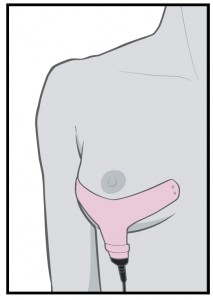
Tiny Transformers are Robots that Join Together and Fold into Countless Shapes
You gotta love the scientists and engineers at the Massachusetts Institute of Technology. They just keep coming up with amazing technology. The latest are millimeter-sized robots, called milli-moteins, that fold in many different forms. Looking like an assortment of rings and strips these complex little robots, design-inspired by the way proteins assemble themselves, join together like the parts in a watch mechanism, or a strand of DNA. Each mini robot has a magnetic motor capable of operating with very little energy input. The current version of the devices assemble sequentially but the inventors see them as reconfiguring into multi-jointed walkers, gears, chains and rings. Smart, strong and programmable, what these scientists have created are the first generation of shape shifters, programmable matter capable of doing many tasks.
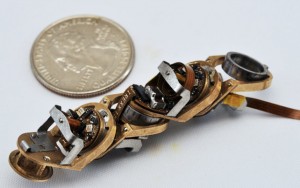
The Chinese Space Program is Developing Mini-Earth Bubbles for Space Missions
For Deep Space survival humans have to develop controlled ecological life support systems (CELSS) that are mini-Earths in a bubble. The United States through NASA is also working on CELSS (see image below). Biosphere II, now part of the University of Arizona, was a project that ended up in failure in its attempt to create a self-sustaining mini-Earth.
This month the Astronaut Center of China announced that it had begun experimenting in 2011 with a CELSS, a 300-cubic meter (10,600 cubic feet) cabin designed to simulate a life support system for extraterrestrial bases on locations like the Moon or Mars. The Chinese CELSS is a closed system stocked with air, water, food, plants, microbes and algae. More advanced CELSS are planned to include raising and harvesting animals for meat protein. What kind of animals would work best? One suggestion is fast growing fish, another silkworms, the latter high in protein, fast to reproduce, and utilitarian if you need the silk.
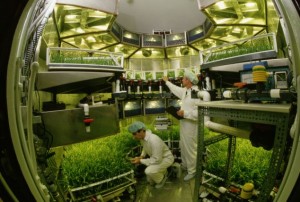
DARPA Awards Molecular Foundry for its Work on Smart Windows
Last month DARPA awarded more than $130 million in funding to cutting-edge research projects focused on energy efficiency. One of these is the Low Cost Solution Processed Universal Smart Window Coatings project. Electrochromic window coating technology responds to changing weather conditions by regulating the amount of light and heat that gets through the glass. The goal is to reduce energy needs from other sources so that passive window light ends up providing much of the heating and cooling. Current elctrochromics are expensive and the materials lack flexibility. The new window coating under development applies a small amount of electricity to the material to vary near infrared light (NIR) transmission through it allowing more in the winter and less in the summer. By integrating the coatings with intelligent control systems, buildings and homes will suddenly have smart windows. The work is a collaboration between Molecular Foundry and Berkeley Lab. The coatings contain a nanocrystal film that changes its properties in the presence of an electrical current.
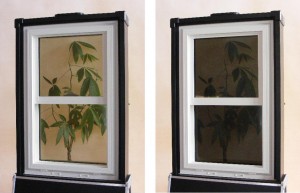
A Postscript
In the last week 21st Century Tech Blog articles started appearing at THE FUTURIST e-magazine blog site, increasing the audience that sees the postings that I and guest authors contribute here. As of December 7, we are approaching 9,000 monthly site visits with the goal to hit the 10,000 mark by the New Year. I thank all of you who read this blog and who have let others know about it. Please keep coming back, commenting on postings, and suggesting new topics.
– Len Rosen

